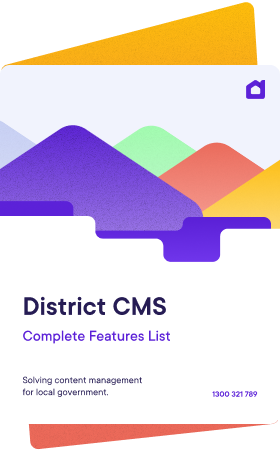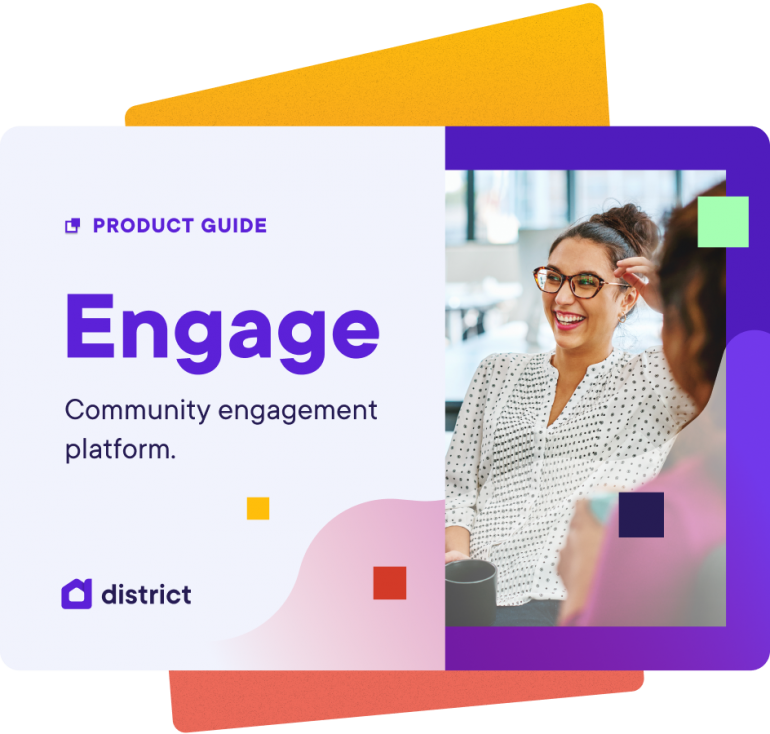For governments and policy makers, genuine community engagement is essential. Without properly understanding and engaging with the diverse intersections and lived experiences of people in the community, it’s impossible to deliver services and build projects that adequately serve their needs, now or into the future.
Good community engagement will help get the planning right, from the start.
Digital community engagement platforms, such as District Engage, offer a simple and accessible way to reach out to communities. Digital tools such as online surveys, forums and quick polls can increase public engagement in matters that affect the community, while offering instant data insights.
These insights can help address the needs of the community and shape the design of the project, while improving community satisfaction. It’s a win-win.
But successful community engagement requires more than online polls and surveys. It must be authentic. This means building a relationship with the community based on trust, understanding and genuine dialogue.
So where to start?
Communication is key
To help create a strong community engagement experience, a great communication strategy is essential, and needs to be clear, inclusive and continuous.
Be clear
Before you begin, consider the aim of the project. Why should the community care about it? Why do you want their involvement? What will you do with their feedback? How will they know if they’ve had an impact on the decision-making process?
Be diverse
Use a diverse range of communication tools, both online and offline, to connect with a broad audience. Email campaigns, letterboxing, and social media can target different members of your community. Offer a range of engagement tools to suit different audiences and varying levels of engagement.
Close the loop
It’s important to close the feedback loop. Keep the community informed and engaged with regular project updates, and let them know how their input has shaped the project. An active community will see value in contributing and sharing their opinions because they’ve engaged in previous projects, and seen how their opinions are valued.
It’s a simple way to build loyalty and encourage future public participation.
Building trust takes time
While staff at your organisation may come and go, residents tend to stay put for some time. So they are well placed to have a deep understanding of the issues faced by the community. This is one of the reasons organisations need to build strong relationships with the people they serve - they need to demonstrate that they recognise and understand a community’s needs and concerns.
One way to showcase your understanding is through storytelling.
Organisations such as local governments have a vast range of data at their fingertips, which can offer valuable insights about the diverse range of lived experiences in the community.
Used sensitively, these rich sources of data can be used for genuine storytelling. Highlighting the authentic experiences of community members - on a website, newsletter or social media, for example, can illustrate a deep understanding of the community, and their struggles and concerns.
From migrant and refugee experiences, to the need for more green space, improved public transport, or increased support services for elderly residents, storytelling can help showcase the genuine experiences of members of the community. This generates a sense of connection, trust and belonging, while illustrating to the community that they are listened to and understood.
Digital tools for community engagement
Storytelling is just one way to strengthen connections in your community. A community experience platform such as District Engage offers a range of features that can help you engage with the local community, and in turn develop a greater understanding and connection.
District Engage employs digital tools such as polls, surveys, brainstorming and community forums that go beyond providing public feedback on projects. Our advanced reporting tools allow real-time feedback and offer valuable insights into community sentiment about a range of issues, helping you develop a greater understanding of community concerns.
District Engage also helps you close the feedback loop, with features such as project updates and timelines that keep the community in the know and help to manage expectations. In addition, our event tool lets you invite the community to engage face-to-face, helping to cement relationships while building understanding and trust.
Without properly understanding or engaging with the broad cross section of the community, it’s impossible to plan and deliver the services and projects needed now and into the future.
With a good communication strategy, a clear and demonstrated understanding of the community you serve, and the digital tools to help foster discussion, debate and participation, you can encourage ongoing community engagement, build meaningful relationships, and ultimately, build stronger communities.
Looking to get started, book in a for a demonstration on our tools and services.




